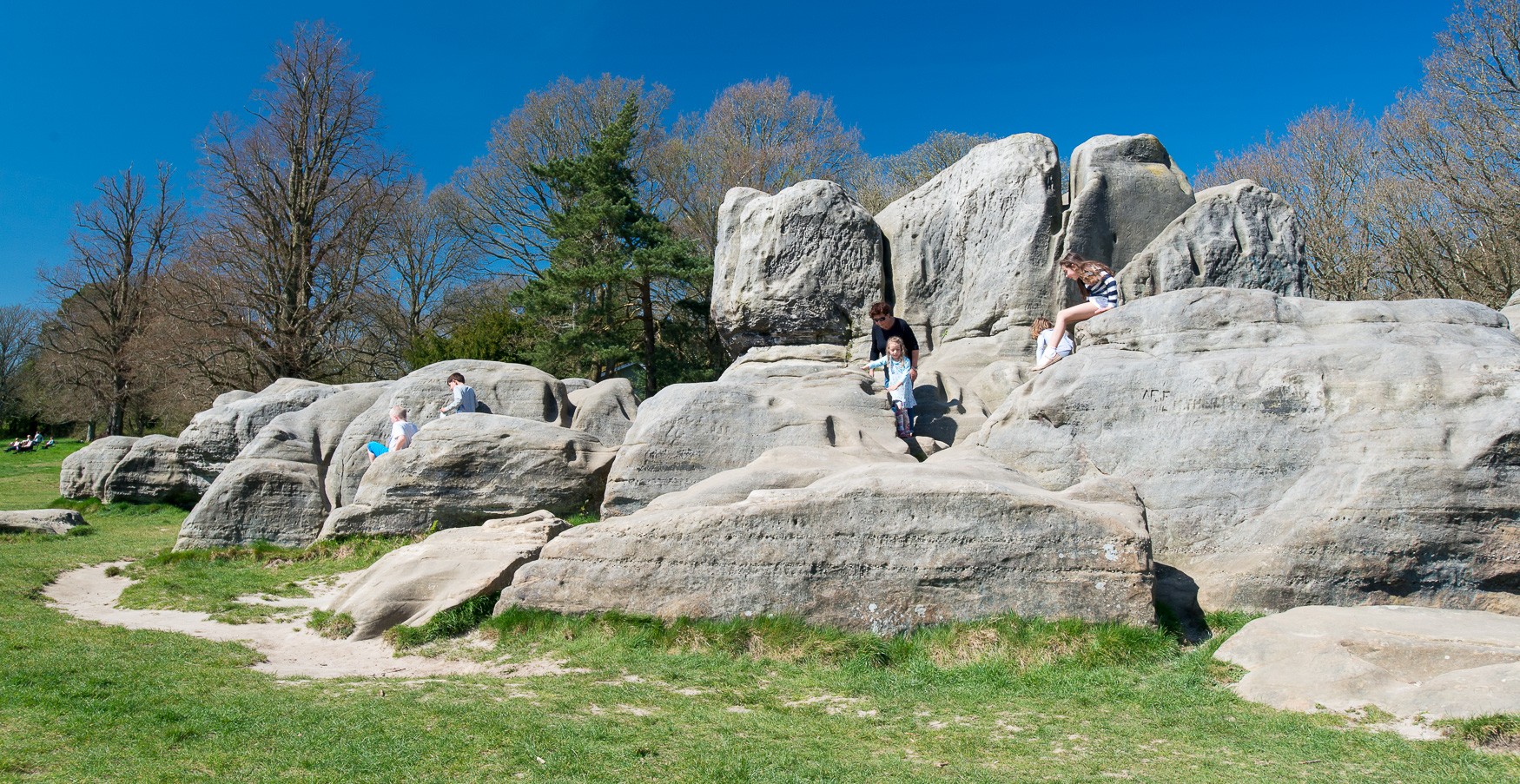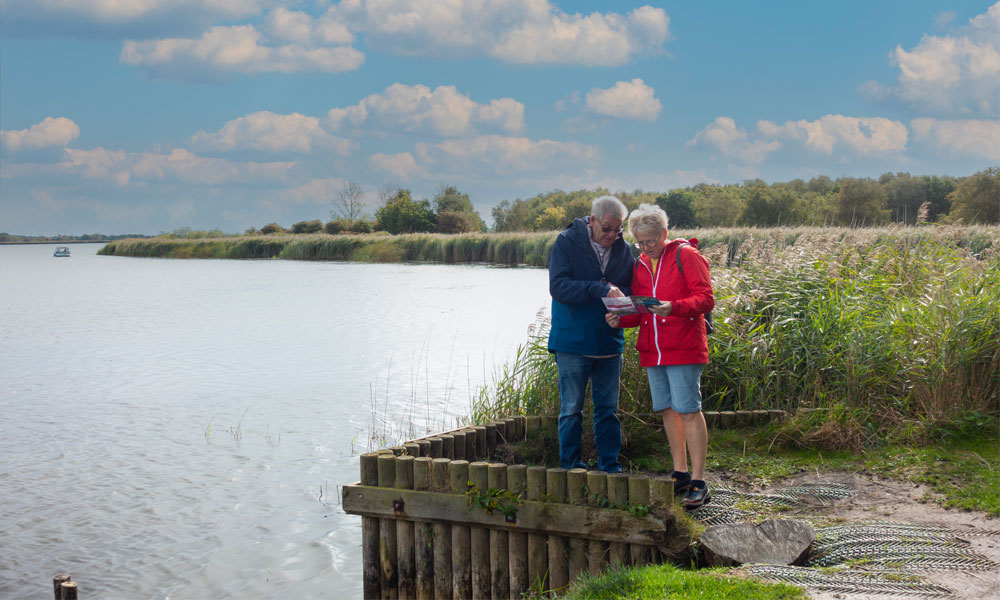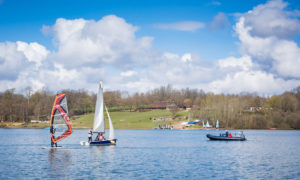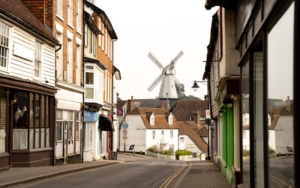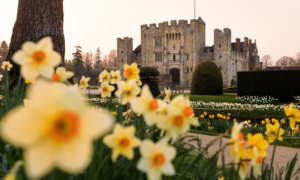If you arrive by train from the London direction, you can see dripping rocks either side of the track just before the tunnel.
Eternally sheltered and damp the conditions are a haven for overhanging ferns.
The unique strata of the terrain makes the ‘Rocks’ in Tunbridge Wells a fascinating draw for visitors to this area and there are several exceptional sandstone outcrops of rock around the town of Royal Tunbridge Wells.
A visit to these unusual features is highly recommended, along with a picnic! And, they are not just for looking at. Some can be climbed easily by children and some are quite exciting for the serious rock climber. Bring the dog too.
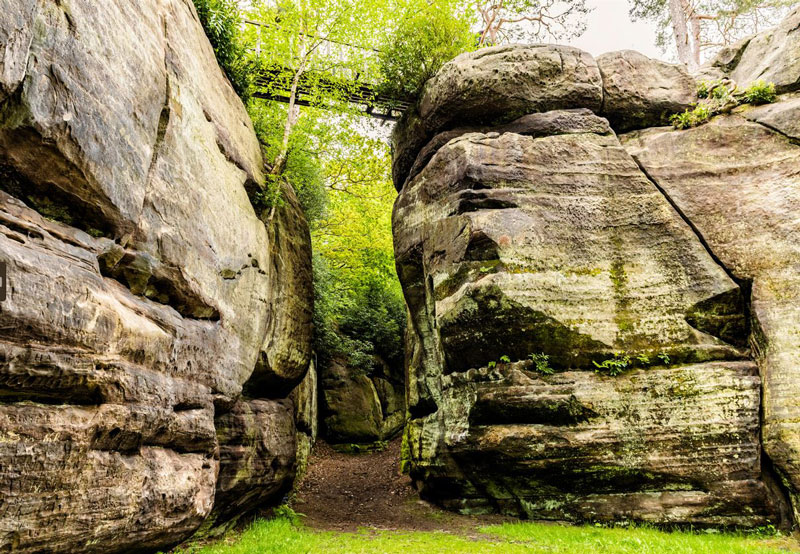
High Rocks
High Rocks is a Scheduled Ancient Monument because it was once a Neolithic Settlement and an Iron Age Fort.
It is designated as a Site of Special Scientific Interest because of the sandstone formations on these highest bluffs in the Weald.
Wander round and wonder at the giant rocks linked by 11 bridges providing an adventurous walk for visitors.
Ideal for fertile imaginations and getting lost in the realms of fantasy you will be able to explore boulders known as the Devil’s Oak, Giant Toad, the Fairy Glen and Bell Rock.
High Rocks is a challenging site for the experienced rock climber; a high percentage of routes are graded at 5c or higher. Tickets for visiting this site can be obtained from the High Rocks Inn.
You can make an enthralling day of it by catching a Spa Valley steam or vintage diesel train from Tunbridge Wells West Station (just off the A26) and disembark at the High Rocks stop. (select dates only)
High Rocks is only 3 km from Royal Tunbridge Wells town centre so can just as easily be reached by a walk from Tunbridge Wells Common or by following the brown tourist signs on the roads.
The rocks on the common.
This is a remarkable natural sandstone formation, classed as a national monument and looks like a giant toad too!
This feature is a mile west of Royal Tunbridge Wells, at Denny Bottom, near to Rusthall Common and The Toad Rock Retreat pub in the village of Rusthall. Pay a visit for free and see if you can spot its eponymous qualities.
It is a lovely, and easy, walk to do from The Pantiles to this famous Site of Special Scientific Interest (SSSI) or as a circular walk. Speak to the Tourist Information Point at the Amelia Scott for further details.
Having been in the guidebooks for more than 200 years, make sure you add at least one of these rocky mysteries to your ‘Must See’ list!
Wellington Rocks
Another spot where you can laze about and revel in a picnic, these are the rocks nearest to the town of Royal Tunbridge Wells.
Situated on Tunbridge Wells Common they are almost in the town and so easily accessible on foot.
They are truly a free and fun filled day out for all and very popular in the summer. Many locals have fond memories of clambering over these rocks in childhood.
Harrison’s Rocks
Harrison’s Rocks are one of the most famous outcrops in the South East of England, to rock climbers at least. They are owned by the British Mountaineering Council.
It is the nearest sandstone climbing site to London, and providentially has a large number of excellent climbs for rock climbers at most grades of difficulty.
Of course you can just take a pleasant amble around and admire these Neolithic creatures along with the surrounding woodland. There is a pay and display car park just next door at Birchden Wood with toilet facilities.
A number of the outcrops can be included in the Sussex Circular walk or the Tunbridge Wells Circular Walk. The Walking page has more details.
Find out more about climbing at Harrison Rocks on the BMC website.



